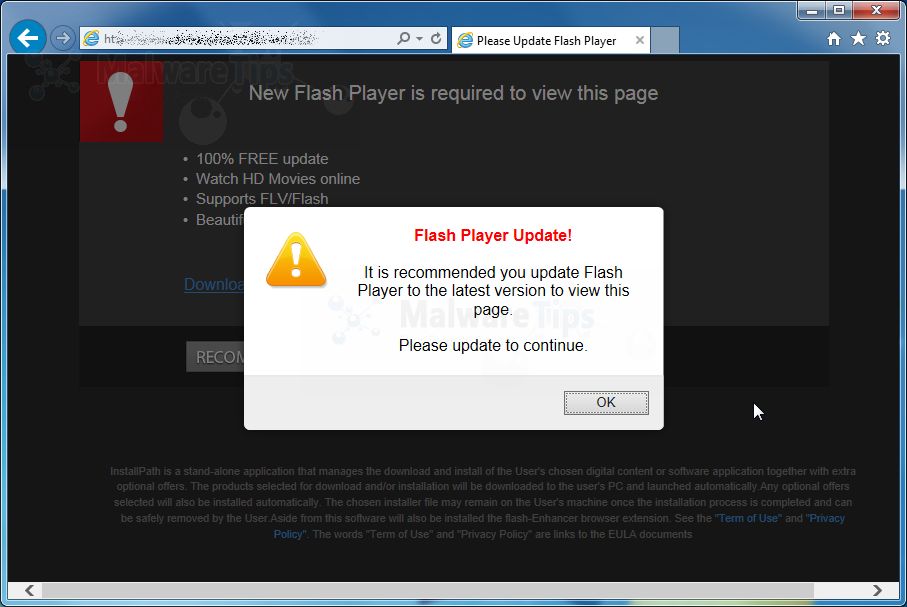May 20, 2015 Free Easy way to remove Adware, Spyware, and Virus on a MAC (apple) 2.0 - Duration: 5:17. Prime Tech 103,833 views.
In your browser's preferences you should find and enable the pop-up blocker.

Helpful Links Regarding Malware Problems
If you are having an immediate problem with ads popping up see The Safe Mac » Adware Removal Guide,AdwareMedic, or Remove unwanted adware that displays pop-up ads and graphics on your Mac - Apple Support.
Open Safari, select Preferences from the Safari menu. Click on Extensions icon in the toolbar. Disable all Extensions. If this stops your problem, then re-enable them one by one until the problem returns. Now remove that extension as it is causing the problem.
The following comes from user stevejobsfan0123. I have made minor changes to adapt to this presentation.
Fix Some Browser Pop-ups That Take Over Safari.
Common pop-ups include a message saying the government has seized your computer and you must pay to have it released (often called 'Moneypak'), or a phony message saying that your computer has been infected, and you need to call a tech support number (sometimes claiming to be Apple) to get it resolved. First, understand that these pop-ups are not caused by a virus and your computer has not been affected. This 'hijack' is limited to your web browser. Also understand that these messages are scams, so do not pay any money, call the listed number, or provide any personal information. This article will outline the solution to dismiss the pop-up.
Quit Safari
Usually, these pop-ups will not go away by either clicking 'OK' or 'Cancel.' Furthermore, several menus in the menu bar may become disabled and show in gray, including the option to quit Safari. You will likely have to force quit Safari. To do this, press Command + option + esc, select Safari, and press Force Quit.
Relaunch Safari
If you relaunch Safari, the page will reopen. To prevent this from happening, hold down the 'Shift' key while opening Safari. This will prevent windows from the last time Safari was running from reopening.
This will not work in all cases. The shift key must be held at the right time, and in some cases, even if done correctly, the window reappears. In these circumstances, after force quitting Safari, turn off Wi-Fi or disconnect Ethernet, depending on how you connect to the Internet. Then relaunch Safari normally. It will try to reload the malicious webpage, but without a connection, it won't be able to. Navigate away from that page by entering a different URL, i.e. www.apple.com, and trying to load it. Now you can reconnect to the Internet, and the page you entered will appear rather than the malicious one.
An excellent link to read is Tom Reed's Mac Malware Guide.
Also, visit The XLab FAQs and read Detecting and avoiding malware and spyware.
See these Apple articles:
If you require anti-virus protection Thomas Reed recommends using ClamXAV. (Thank you to Thomas Reed for this recommendation.)
From user Joe Bailey comes this equally useful advice:
Mac Virus Scam Pop Up
The facts are:
1. There is no anti-malware software that can detect 100% of the malware out there.
2. There is no anti-malware that can detect everything targeting the Mac.
3. The very best way to prevent the most attacks is for you as the user to be aware that
the most successful malware attacks rely on very sophisticated social engineering

techniques preying on human avarice, ****, and fear.
4. Internet popups saying the FBI, NSA, Microsoft, your ISP has detected malware on
your computer is intended to entice you to install their malware thinking it is a
protection against malware.
5. Some of the anti-malware products on the market are worse than the malware
from which they purport to protect you.
6. Be cautious where you go on the internet.
7. Only download anything from sites you know are safe.
Apple Virus Pop Up
8. Avoid links you receive in email, always be suspicious even if you get something
you think is from a friend, but you were not expecting.
9. If there is any question in your mind, then assume it is malware.
Nov 30, 2014 9:59 AM
Pop-ups can be ads, notices, offers, or other alerts that open over or under your browser window, in another tab, or in your current window. Some pop-ups use phishing tactics—like warnings or prizes—to trick you into believing they’re from Apple or another trusted company, so you’ll share personal or financial information. Others might claim to offer free downloads, software updates, or plugins, to try to trick you into installing unwanted software.
Unless you’re confident of an ad’s legitimacy, you should avoid interacting with pop-ups or webpages that seem to take over your screen. Here are additional tips that can help you manage pop-ups and other unwanted interruptions.
Check and update your software
Always make sure you install the latest software updates for all your Apple products. Many software releases have important security updates and may include improvements that help control pop-ups.
The safest place to download apps for your Mac is the Mac App Store. If you need third-party software for your Mac, and it isn’t available in the App Store, get it directly from the developer or another reliable source, rather than through an ad or link.
Check Safari settings and security preferences
Game Pop Up Mac Google Virus Protection
Make sure Safari security settings are turned on, particularly Block Pop-ups and Fraudulent Website Warning.
On your iPhone, iPad, or iPod touch, go to Settings > Safari and turn on Block Pop-ups and Fraudulent Website Warning.
On your Mac you can find these same options in the Security tab of Safari preferences. You can also click the Extensions tab in Safari preferences to check if you have any extensions installed that you prefer to turn off.
Pop-ups and ads in Safari
If you see an annoying pop-up in Safari, you can go to the Search field and enter a new URL or search term to browse to a new site. If you don’t see the Search field on your iPhone, iPad, or iPod touch, tap the top of the screen to make it appear.
Some popups and ads have fake buttons that resemble the close button, so use caution if you try to close a pop-up or ad. If you're unsure, avoid interacting with the popup or ad and close the Safari window or tab.
If you might have installed adware or other unwanted software on your Mac
If you see pop-ups on your Mac that just won’t go away, you might have inadvertently downloaded and installed adware (advertising-supported software) or other unwanted software. Certain third-party download sites might include programs that you don’t want with the software that you install.
If you think that you might have malware or adware on your Mac, update to the latest version of macOS. If your Mac is already running the latest version, restart it. macOS includes a built-in tool that removes known malware when you restart your Mac.

Check your Applications folder to see if you have any apps that you didn’t expect and uninstall them. If you continue to see advertising or other unwanted programs on your Mac, contact Apple.